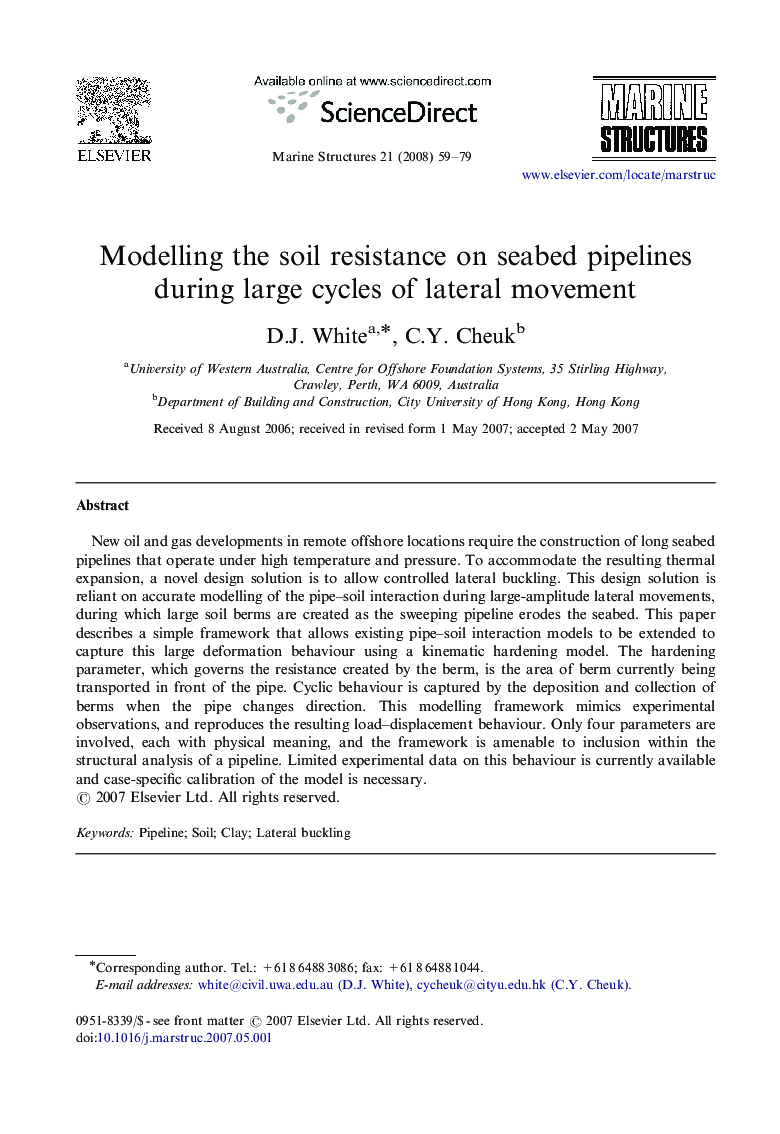| Article ID | Journal | Published Year | Pages | File Type |
|---|---|---|---|---|
| 293971 | Marine Structures | 2008 | 21 Pages |
New oil and gas developments in remote offshore locations require the construction of long seabed pipelines that operate under high temperature and pressure. To accommodate the resulting thermal expansion, a novel design solution is to allow controlled lateral buckling. This design solution is reliant on accurate modelling of the pipe–soil interaction during large-amplitude lateral movements, during which large soil berms are created as the sweeping pipeline erodes the seabed. This paper describes a simple framework that allows existing pipe–soil interaction models to be extended to capture this large deformation behaviour using a kinematic hardening model. The hardening parameter, which governs the resistance created by the berm, is the area of berm currently being transported in front of the pipe. Cyclic behaviour is captured by the deposition and collection of berms when the pipe changes direction. This modelling framework mimics experimental observations, and reproduces the resulting load–displacement behaviour. Only four parameters are involved, each with physical meaning, and the framework is amenable to inclusion within the structural analysis of a pipeline. Limited experimental data on this behaviour is currently available and case-specific calibration of the model is necessary.
